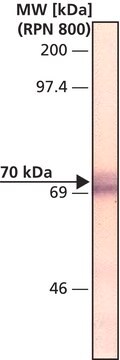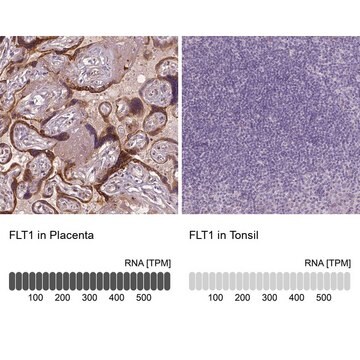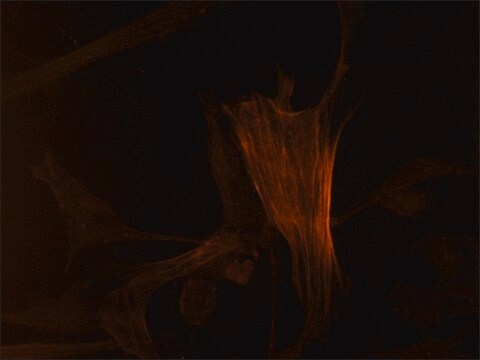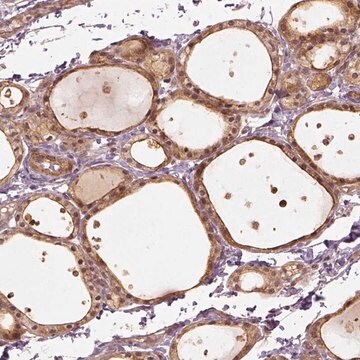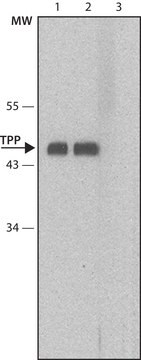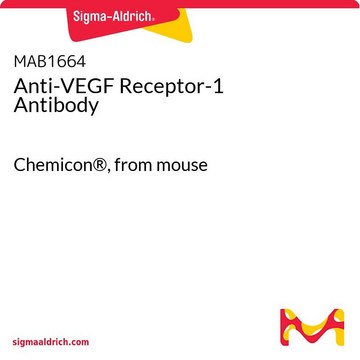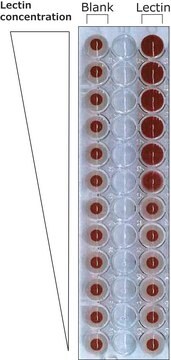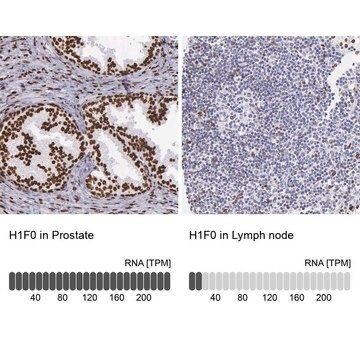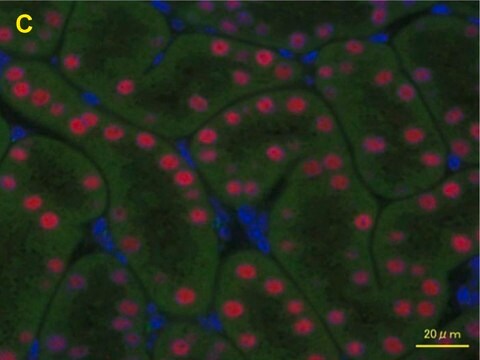V4762
Monoclonal Anti-Vascular Endothelial Growth Factor Receptor-1 antibody produced in mouse
clone FLT-19, tissue culture supernatant
Synonim(y):
Anti-Flt1 Receptor, Anti-VEGF R-1
About This Item
Polecane produkty
pochodzenie biologiczne
mouse
białko sprzężone
unconjugated
forma przeciwciała
tissue culture supernatant
rodzaj przeciwciała
primary antibodies
klon
FLT-19, monoclonal
zawiera
15 mM sodium azide
reaktywność gatunkowa
human
metody
immunohistochemistry (frozen sections): 1:100 using human placenta
immunoprecipitation (IP): suitable
indirect ELISA: suitable
microarray: suitable
izotyp
IgG1
numer dostępu UniProt
Warunki transportu
dry ice
temp. przechowywania
−20°C
docelowa modyfikacja potranslacyjna
unmodified
informacje o genach
human ... FLT1(2321)
Opis ogólny
Immunogen
Zastosowanie
- znakowaniu immunofluorescencyjnym
- test immunoenzymatyczny (ELISA)
- immunohistochemii
- immunoprecypitacji
Działania biochem./fizjol.
Oświadczenie o zrzeczeniu się odpowiedzialności
Nie możesz znaleźć właściwego produktu?
Wypróbuj nasz Narzędzie selektora produktów.
Hasło ostrzegawcze
Warning
Zwroty wskazujące rodzaj zagrożenia
Zwroty wskazujące środki ostrożności
Klasyfikacja zagrożeń
STOT RE 2
Kod klasy składowania
10 - Combustible liquids
Klasa zagrożenia wodnego (WGK)
WGK 3
Wybierz jedną z najnowszych wersji:
Masz już ten produkt?
Dokumenty związane z niedawno zakupionymi produktami zostały zamieszczone w Bibliotece dokumentów.
Nasz zespół naukowców ma doświadczenie we wszystkich obszarach badań, w tym w naukach przyrodniczych, materiałoznawstwie, syntezie chemicznej, chromatografii, analityce i wielu innych dziedzinach.
Skontaktuj się z zespołem ds. pomocy technicznej